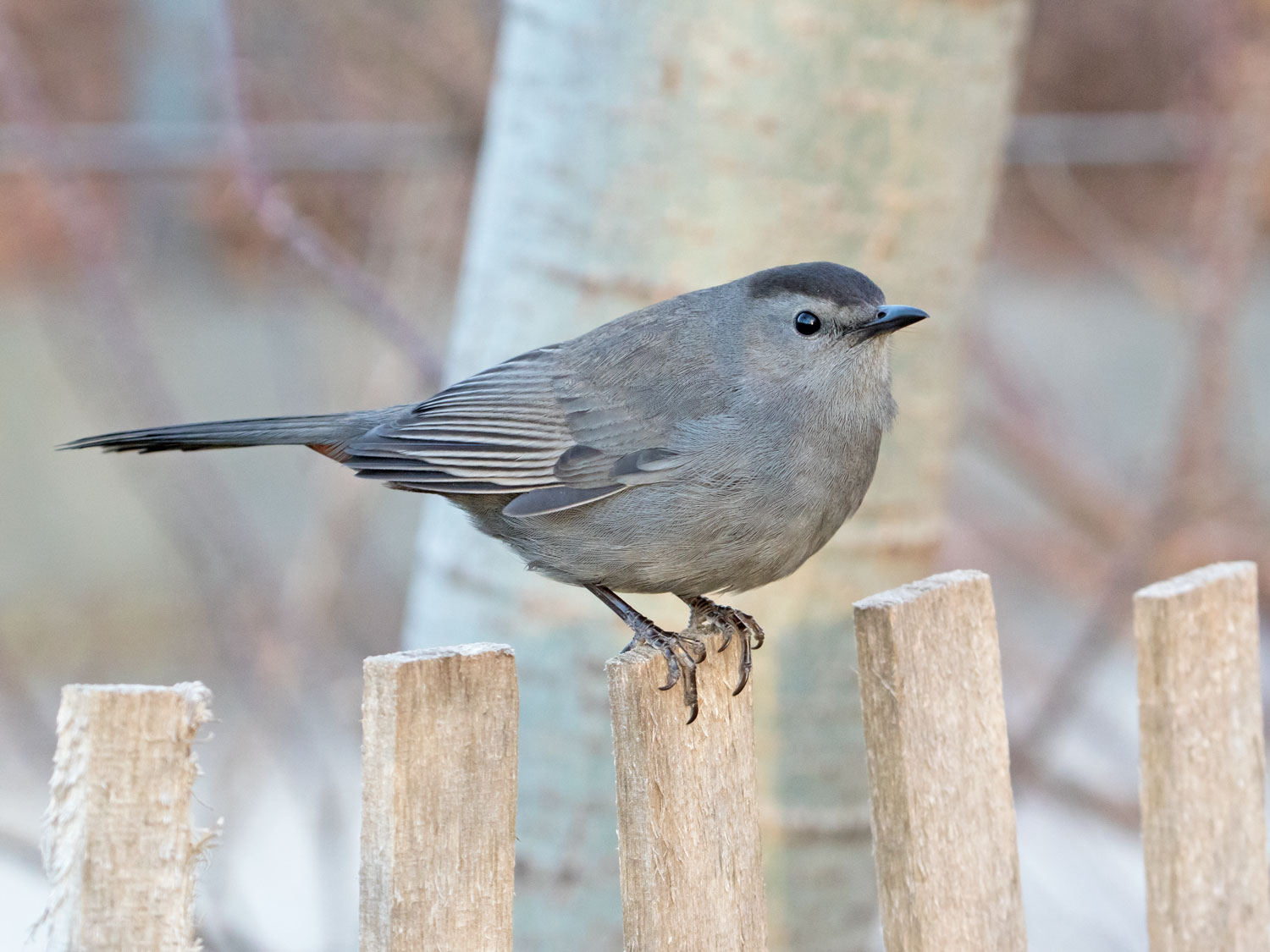Brooklyn Bird Watch: August 12
Gray Catbird. Scientific name: Dumetella carolinensis

Today Brooklyn Bird Watch features an excellent Heather Wolf photo of the Gray Catbird. The Gray Catbird is virtually a gray monotone color all over except for a prominent skull cap of black feathers on top of its head. It also has a russet colored area of feathers under its tail. If you have ever heard a catbird you will agree that it really does sound like a cat. Gray Catbirds are relatives of mockingbirds and thrashers, and they share similar vocal abilities. Like the Mockingbird, they copy the sounds of other species and string those sounds together, making their own song.
You’ve probably at least heard of the expression “sitting in the catbird seat”, which indicates being in an advantageous position.
By the way, it was Red Barber, the Hall of Fame radio announcer for none other than the Brooklyn Dodgers for almost 15 years back in the 1940s and 50s who helped popularize the expression “sitting in the catbird seat”, which meant “sitting pretty”; for example, when a batter had three balls and no strikes on him.

Brooklyn Boro
View MoreNew York City’s most populous borough, Brooklyn, is home to nearly 2.6 million residents. If Brooklyn were an independent city it would be the fourth largest city in the United States. While Brooklyn has become the epitome of ‘cool and hip’ in recent years, for those that were born here, raised families here and improved communities over the years, Brooklyn has never been ‘uncool’.